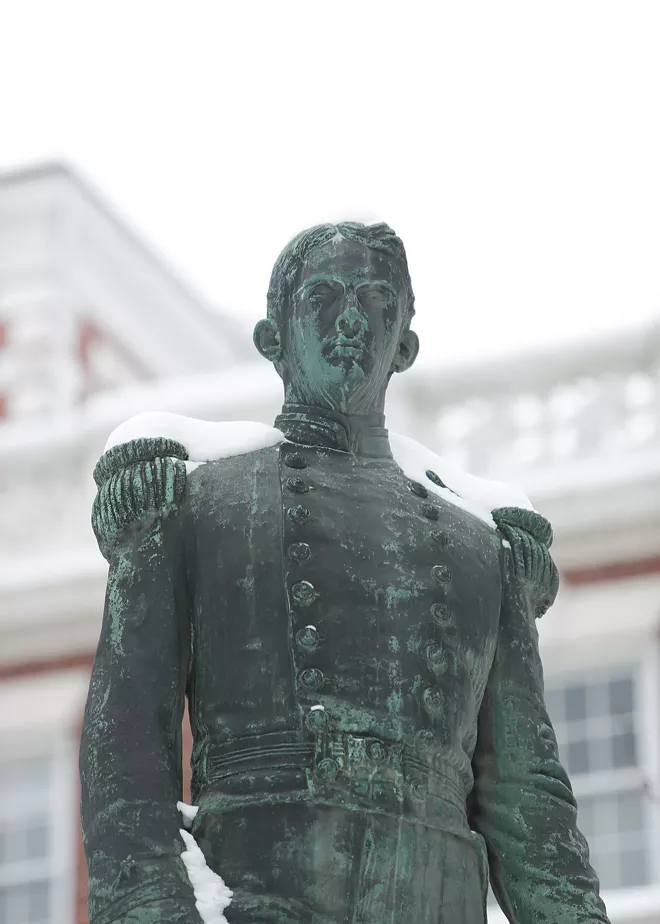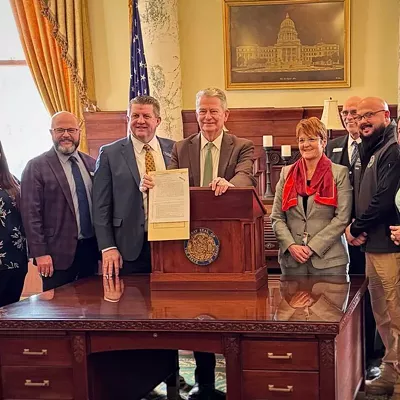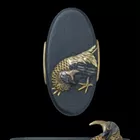For more than 100 years, a statue of John Monaghan has loomed over the downtown Spokane intersection of Riverside Avenue and Monroe Street.
The statue was erected in 1906, several years after Monaghan — a naval officer and the son of a wealthy Spokane family — died during the U.S. military's questionable actions on the Samoan islands.
An inscription below the statue refers to Samoan people as a "savage foe" and contains other inaccurate and racist imagery. In recent years, members of Spokane's Native Hawaiian and Pacific Islander community and other groups have described the statue as a troubling reminder of the nation's violent colonial past and called for its removal.
Last summer, those concerns prompted the Spokane City Council to pass a law that would create a process to evaluate and respond to community concerns about the Monaghan statue and similar monuments on city-owned property. The law would have put the city's Human Rights Commission in charge of evaluating complaints raised by citizens.
Then-Mayor Nadine Woodward vetoed the ordinance, arguing that the city's Historic Landmarks Commission should be in charge of reviewing concerns. Because of a vacancy, the City Council lacked its usual five-person, left-leaning supermajority, and was unable to override Woodward's veto.
But now that Mayor Lisa Brown — who is more politically aligned with the council majority — is in office, council members are planning to try again. A new version of the ordinance is slated for a vote on Jan. 28.
"The support is there from the administration," says Council President Betsy Wilkerson. "I believe it will go forward."
The new version of the law is mostly identical to the one vetoed this summer. It applies to any "institutional statements, names or monuments" on city-owned property that "reflect the historical denial of human rights, discrimination and exclusion" and can "trigger mental pain and suffering among community members."
The city's Human Rights Commission will process concerns submitted by citizens and determine if the name or monument is discriminatory or likely to "cause mental pain, suffering or disrespect in a reasonable person with a cultural background and lived experience."
If the commission finds the complaint is valid, it will be forwarded to the city's Office of Civil Rights, Equity and Inclusion. After further evaluation, the Civil Rights Office will pass the complaint back to the Human Rights Commission, which will then recommend a course of action for the City Council.
Council member Michael Cathcart, a member of the council's two-person conservative-leaning minority, voted against the original version of the law. He says he'll likely vote against the new version as well because he feels it lacks a clear criteria for evaluating complaints.
"My main concern is that we're not doing this based on any sort of data or metrics... It's really emotional," Cathcart says. "I think the next step from banning statues is to start banning books."
When Cathcart raised those concerns during a council meeting earlier this month, Council member Paul Dillon, who introduced the new law, said that some issues can be hard to quantify with data.
"I think there is an emotional reaction to statues that are offensive or markings that are certainly offensive, and that is very valid," Dillon said. "I wouldn't want to invalidate those feelings." ♦


























